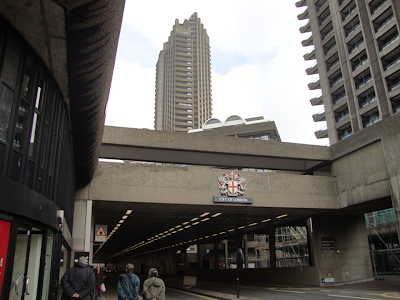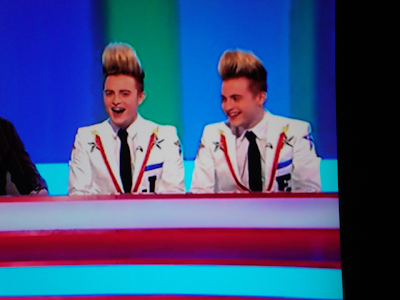 |
| The Hotel Russell in the Bloomsbury/University of London area |
The photo above shows the entrance to the Hotel Russell, located on Russell Square in the Bloomsbury/University of London area of the city. It houses a nice restaurant, a bar, and conference and gala ballrooms -- in addition to 343 rooms, ranging in Olympics-time rates of £264-336 ($436-$589 USD) per night. It's not the most expensive hotel in London, but it's also not where you stay if you're on a tight budget.
So that was not where I stayed -- but fortunately, neither was this:
 |
| Low-end hostel accommodations near Paddington Station |
The room above is part of a hostel on the upper floor of a pub in the not-so-charming (OK, depressing) Paddington Station area, where I took the train back to Heathrow. The pub advertised rooms for £19, ($33 USD) per night, and the bartendress on duty was nice enough to show me the upstairs when I asked to see what £19 accommodations were like. Come Olympics-time, the rate was going up to £50 ($88 USD).
Hostels are the most affordable lodging
The room was humid with a dank, musty smell and shower/restroom facilities down the hall. According to the guidebooks, hostels can be a good option if you are traveling on a really tight budget and don't mind sharing sleeping facilities with strangers.
However, I think you can find better hostel accommodations than the room pictured above. Fodor's London 2011 recommends a hostel, which like the Hotel Russell, is in the Bloomsbury/University of London area. It's called "The Generator," and lodging there ranges from £20-35 ($35-61 USD) per night. (Bloomsbury is the brainy, intellectual part of London; featuring the British Museum, which is worth a visit whenever you can go.)
The Generator has a restaurant, a bar, free internet access, and the option of single and twin rooms with their own washup facilities. It's described as a place where partiers can find fellow partiers, which is code for young, fun and probably noisy. Here's the official Website.
A/C and en suite, yes, please
Also worth knowing: Not all London accommodations have air-conditioning. This summer, the temperature in London has been running in the low- to mid-70s, so the need for A/C has not been as critical as in most parts of the U.S. during our record-hot summer. But still, my third-floor room at the "not-that" Four Seasons back in March was uncomfortably humid during the one afternoon that I was there for a few mintues -- but fine when I returned after dark. For Olympics visitors, after-dark could be as late as 10:30 p.m. because, believe it or not, that's how late the sun can set in England during the summer.
Another helpful FYI: The term "en suite" means that a room has its own toilet facilities. If you are booking online, especially if your place-to-stay is not a traditional hotel, do not assume that your room will have a toilet unless "en suite" is part of the description.
Next up: My accommodations at the "not-that" Four Seasons. This will be a live link as soon as the post is written.


















































